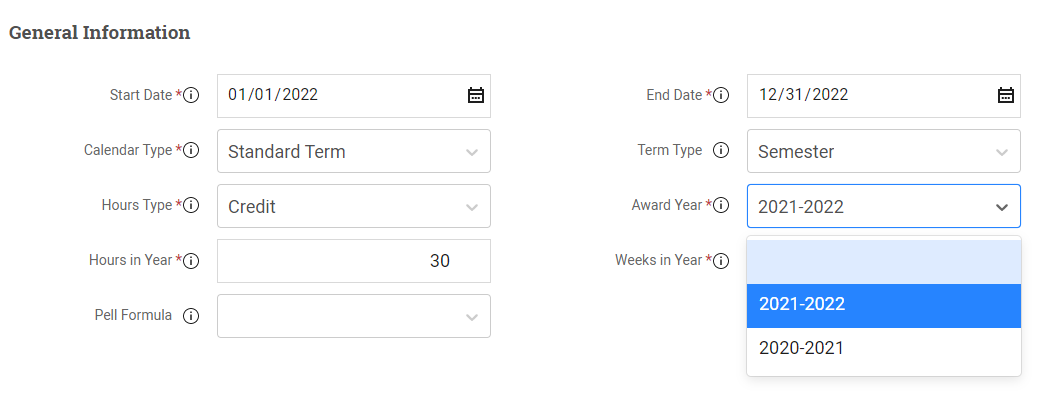Academic Years
The academic years feature in PowerFAIDS makes many aspects of the financial aid packaging process easier. Setting up accurate academic years in PowerFAIDS allows for:
-
Automated BBAY packaging: With Borrower-Based Academic Year (BBAY) packaging, students have the flexibility to start classes and receive their disbursements at any time of the year, rather than having to wait until the start of the next traditional academic calendar. You can now account for this flexibility in PowerFAIDS by creating and defining academic years for BBAY students. This allows for ease of reporting and tracking nontraditional schedules, while also giving you the ability to specify which award year the student's academic year falls under if it crosses over into the next federal award year.
-
Streamlined academic year reporting to COD: By storing the start and end dates of the academic year on the student record, those dates can be evaluated when reporting loans to the U.S. Department of Education's Common Origination and Disbursement (COD) instead of only evaluating the start and end dates of the payment period. This allows for accurate reporting of an academic year without having to perform manual adjustments when a student's payment period does not match the academic year (for example, in the case that a student starts or completes their program in the middle of an academic year).
-
Crossover years: If an academic year crosses over into the next federal award year, you can select which of the two award years to associate with that academic year. At the individual student level, you can also specify which award year to associate with payment periods that cross into the next award year, giving you the flexibility to choose the award year that will best benefit your students.
Tip: When setting up an academic year, the start and end dates should not initially include optional summer semester dates. The academic year start or end date must be adjusted on the individual student when the student enrolls and receives the applicable federal award for an optional summer semester. Academic year start and end dates can be adjusted manually or via batch processing.
Crossover Academic Years
For nontraditional programs with academic calendars that straddle two federal award years, you can choose which federal award years to associate with that academic year. When creating an academic year in System Administration, PowerFAIDS will automatically recognize when an academic year crosses over into the next award year, and the Award Year field will contain a drop down with the two award years you can choose from.
Borrower-Based Academic Years
Because academic years are separated from federal award years in PowerFAIDS, PowerFAIDS can easily accommodate a Borrower-Based Academic Year (BBAY) structure.
Undergraduate Students
This information is coming soon.
Graduate Students
To set up your academic years to award loans to graduate students using BBAY, complete the following steps:
Each academic year honors the federal unsubsidized loan annual limit and has its own cost of attendance. Additionally, now that each BBAY is within its own academic year, packaging formulas and automated packaging can still be used for awarding under this structure.
Let's say you have a 3-year program at your institution that defines the academic year as Fall/Spring with available Summer. This program requires enrollment year-round.
For a student who enrolled in this program in Fall 2024 with an expected graduation of Spring 2027, the table below shows how the student’s academic years could be set up in PowerFAIDS.
|
Academic Year |
Award Year |
Payment Periods |
Unsubsidized Loan |
|---|---|---|---|
| BBAY 1 – 8/15/24-5/15/25 | 2024-2025 | Fall 2024, Spring 2025 | $20,500 |
| BBAY 2 – 5/30/25-12/15/25 | 2025-2026 | Summer 2025, Fall 2025 | $20,500 |
| BBAY 3 – 1/15/26-8/5/26 | 2025-2026 | Spring 2026, Summer 2026 | $20,500 |
| BBAY 4 – 8/15/26-5/15/27 | 2026-2027 | Fall 2026, Spring 2027 | $20,500 |
